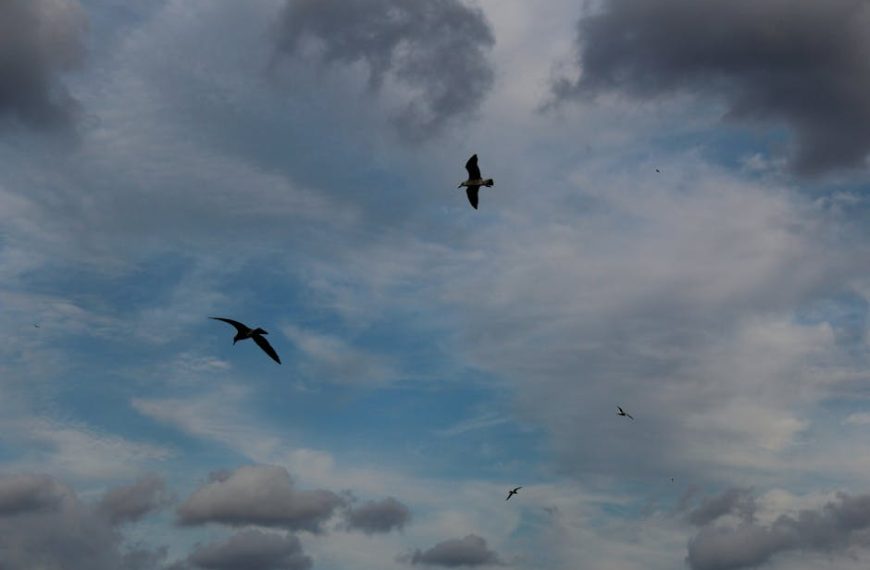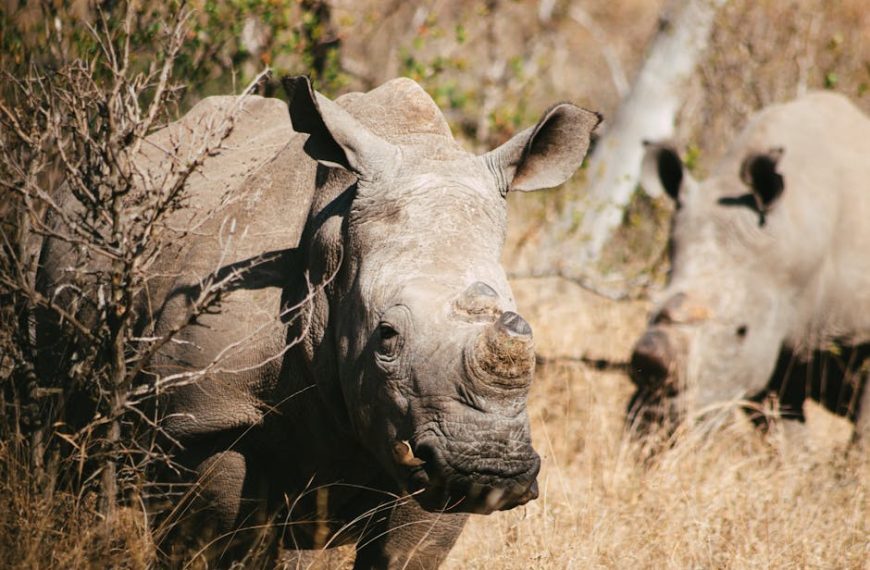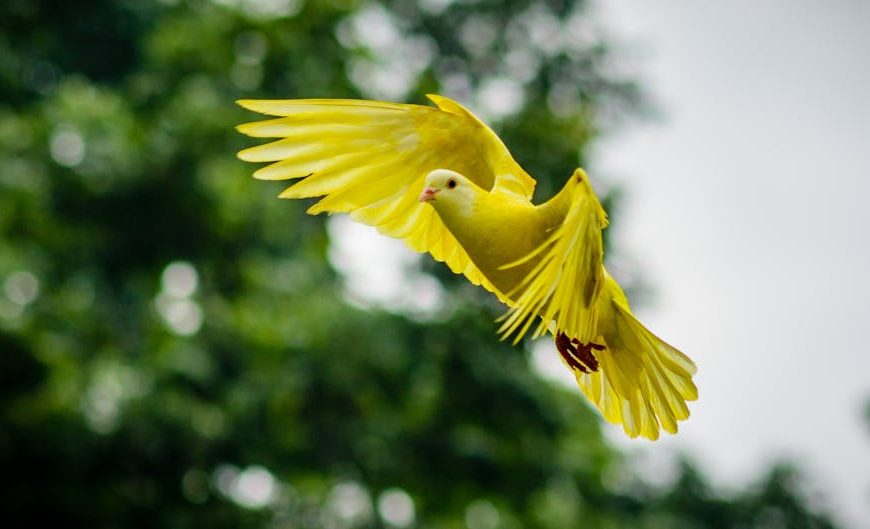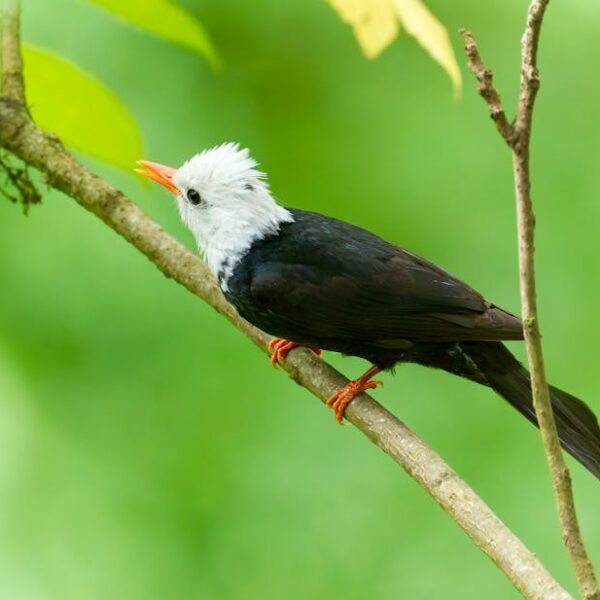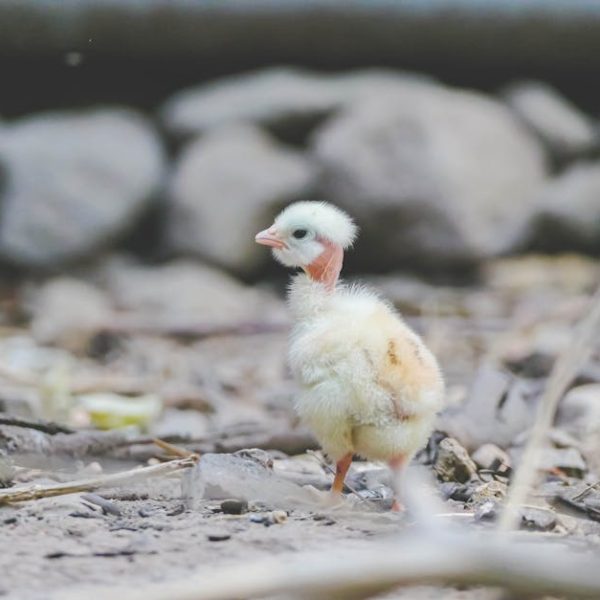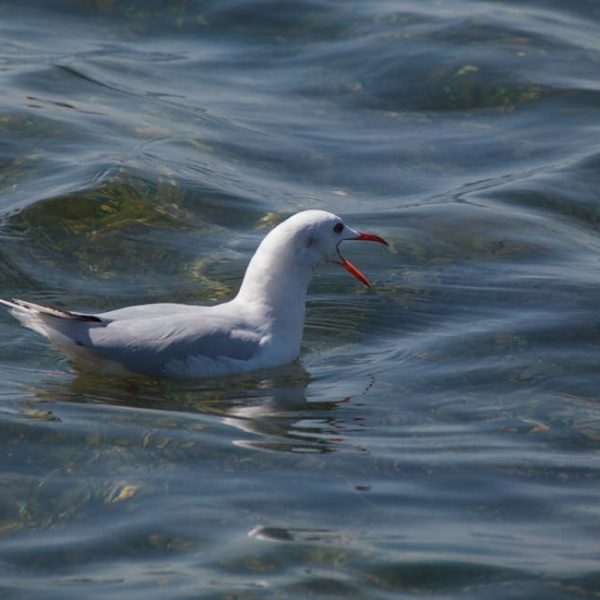Windy weather is a challenge for many birds, affecting their daily routines, feeding habits, and even nesting safety. However, these resilient creatures have developed several coping strategies, ranging from behavior modifications to specific shelter choices.
Understanding Bird’s Behaviors in Windy Conditions
Birds are innately equipped with survival instincts that kick into gear when the wind picks up. Just like human behavior changes according to weather conditions, birds react similarly to high winds and storms. A primary reason for this is their ability to sense changes in barometric pressure. With this early warning system, birds can prepare for the worst, usually by seeking shelter.
Examples of bird behavior modifications in windy conditions include:
- Limiting their flying activities to reduce energy consumption and the risk of getting swept away
- Hunkering down in safe places to wait out the storm
- Grouping together for warmth and protection
Common Types of Shelters Used by Birds in Windy Weather
Birds seek shelter during windy conditions in a range of spots, and their preference may vary based on their size, species, and inherent habitat. Some of these shelters include trees and shrubs, particularly evergreen trees or dense shrubs that can provide a more substantial buffer against wind. Birdhouses, cliffside crags, rock crevices, and dense vegetation are other common shelters.
Here is a breakdown of the pros and cons of different shelter types:
| Shelter Type | Pros | Cons |
|---|---|---|
| Trees | Effective wind buffer, abundance in most habitats | Potential displacement during high winds |
| Shrubs | Excellent concealment from predators | Limited space |
| Cliffs | Protection from wind and predators | Limited availability in certain habitats |
| Birdhouses | Designed for shelter, protection from predators | Depends on human involvement, maintenance required |
Bird watchers may enhance their experience by understanding these sheltering behaviors. Observing the roosting sites during windy days can offer unique insights into the life and habits of different bird species.
Role of Nesting in Providing Wind Shelter for Birds
Contrary to common belief, birds’ nests serve more than just hosting eggs and nurturing chicks. They are also critical in providing shelter during adverse weather, specifically windy conditions. The design of the nest, its location, and the materials used in its construction all contribute to how well it can protect the bird from wind.
Different types of nests and their wind resistance properties include:
- Cup-shaped nests: Found in trees and shrubs, these nests are easy to cover and conceal, offering shelter against wind
- Cavity nests: These are built in holes of trees or rocks and provide excellent wind protection.
- Platform nests: These are built by larger birds like eagles and are usually sturdy enough to withstand wind.
As a best practice, bird watchers should observe nests from a safe distance, minimising disturbance to the bird life that resides within.
Human-Made Structures as Shelters for Birds in Winds
Human activity has reshaped a lot of natural habitats, but resilient birds have adapted well to this change. Modern birds often use man-made structures as wind shelters. Buildings with ledges, chimneys, or other elevated surfaces can make an ideal perch for birds during windy periods.
The reasons for the efficiency of these structures include:
- Height: Located high off the ground, these structures offer birds the advantage of a great lookout point without battling the wind while flying.
- Protection: Ledges and alcoves of buildings can provide shelter from wind and rain, similar to rock crevices or tree cavities.
Examples of man-made structures commonly used by birds include rooftops, window ledges, traffic lights, telephone wires, and billboards.
As a pro tip, homeowners can make their yards more bird-friendly during windy weather. Providing birdhouses, maintaining shrubs and making sure to feed birds can help these creatures find shelter and food during the storm.
Impact of Wind on Birds and Mitigation Strategies
Windy weather can pose several challenges to birds, like difficulties in flying, feeding disruptions, and risk of nest or egg damage. Nevertheless, birds have developed strategies to combat wind, including flocking together for aerodynamics, flying low to avoid the strongest gusts, and resting intermittently to conserve energy.
Signs that birds are coping with windy conditions may include:
- Birds are flying closer to the ground.
- Flocking birds are maintaining tight formations.
- Birds are resting more often than usual on tree branches, posts, and other solid structures.
During windy weather, people can adopt bird-friendly practices to help birds. These include:
- Leaving out extra food, as high winds can scatter normal sources of food.
- Providing water sources like bird baths, as natural sources might be contaminated with debris.
- Refraining from trimming trees and shrubs that might provide windproof habitats.
- If you have bird houses, check and repair them if needed to provide a secure shelter.
In dealing with windy weather, birds exhibit a mix of adaptations, resilience, and survival instincts. Understanding their behaviors allows us to appreciate their survival strategies and offers guidance on how to assist them during challenging weather conditions.
Key Takeaway:
- Birds have instinctual responses to the wind, such as limiting their flight and seeking shelter.
- They rely on different structures for shelter like trees, shrubs, cliffs, bird houses and dense vegetation, and their choice of shelter varies with species, habitat, and instinct.
- Birds use nests not only for breeding but also as a protective shield against wind.
- Adaptability allows modern birds to utilize man-made structures like buildings, chimneys, and other elevated structures as shelter from the wind.
- Windy conditions can impede birds’ ability to fly and feed and can lead to nest and egg damage. However, birds employ strategies like flocking together, flying low and taking breaks to overcome these challenges.
In understanding where birds seek shelter when it’s windy, we gain insight into their incredible adaptability and resilience. Whether nature-made or man-made, birds find ways to protect themselves. As stewards of nature, we can lend a helping hand by making our homes and yards more bird-friendly during windy conditions.
FAQs
Q: Besides wind, what other climatic conditions affect bird behaviour?
A: Birds can be affected by a number of weather conditions including extreme temperatures, heavy rain, snow, and even environmental occurrences such as forest fires. Each of these conditions can impact bird behavior, migration patterns, feeding habits, and breeding cycles.
Q: Can wind direction influence bird migration?
A: Yes, wind direction can contribute to the patterns of bird migration. Birds often take advantage of tailwinds that are moving in the same direction they are migrating to conserve energy and maximize the distance they can travel.
Q: What can be done to help birds during particularly windy seasons like monsoons?
A: To help birds during windy seasons, you could provide sturdy birdhouses that can resist winds, provide extra food as avian food sources may be disrupted, and leave out fresh water if natural sources become contaminated. Avoid pruning trees or shrubs that could provide natural shelter for birds during this time.
Q: How are birds able to construct nests that can withstand windy conditions?
A: Birds possess an innate knowledge about constructing durable and safe nests. The materials used, shape of the nest, and location all play pivotal role in protecting against wind. For example, cavity nests built in holes of trees or rocks provide excellent wind protection.
Q: Do noise levels due to wind affect bird communication?
A: Elevated noise levels, like the roaring of a strong wind, can indeed interfere with bird communication. Some birds may increase the volume of their calls, while others may wait until the wind subsides to communicate.
Feel free to share this article with your fellow bird-watchers and nature enthusiasts. Explore more posts on our website to foster your understanding and appreciation of wildlife behavior and conservation.


